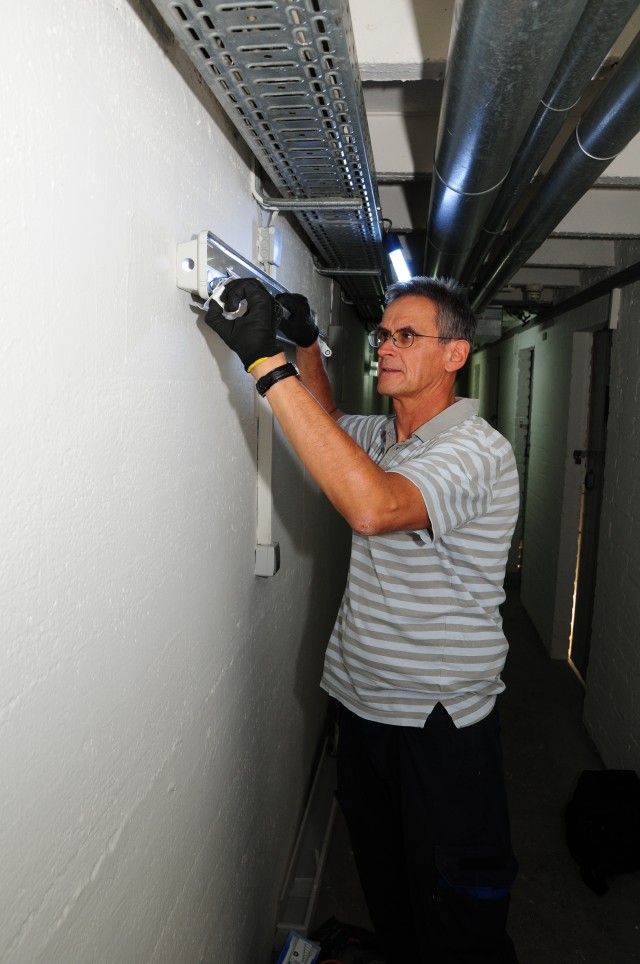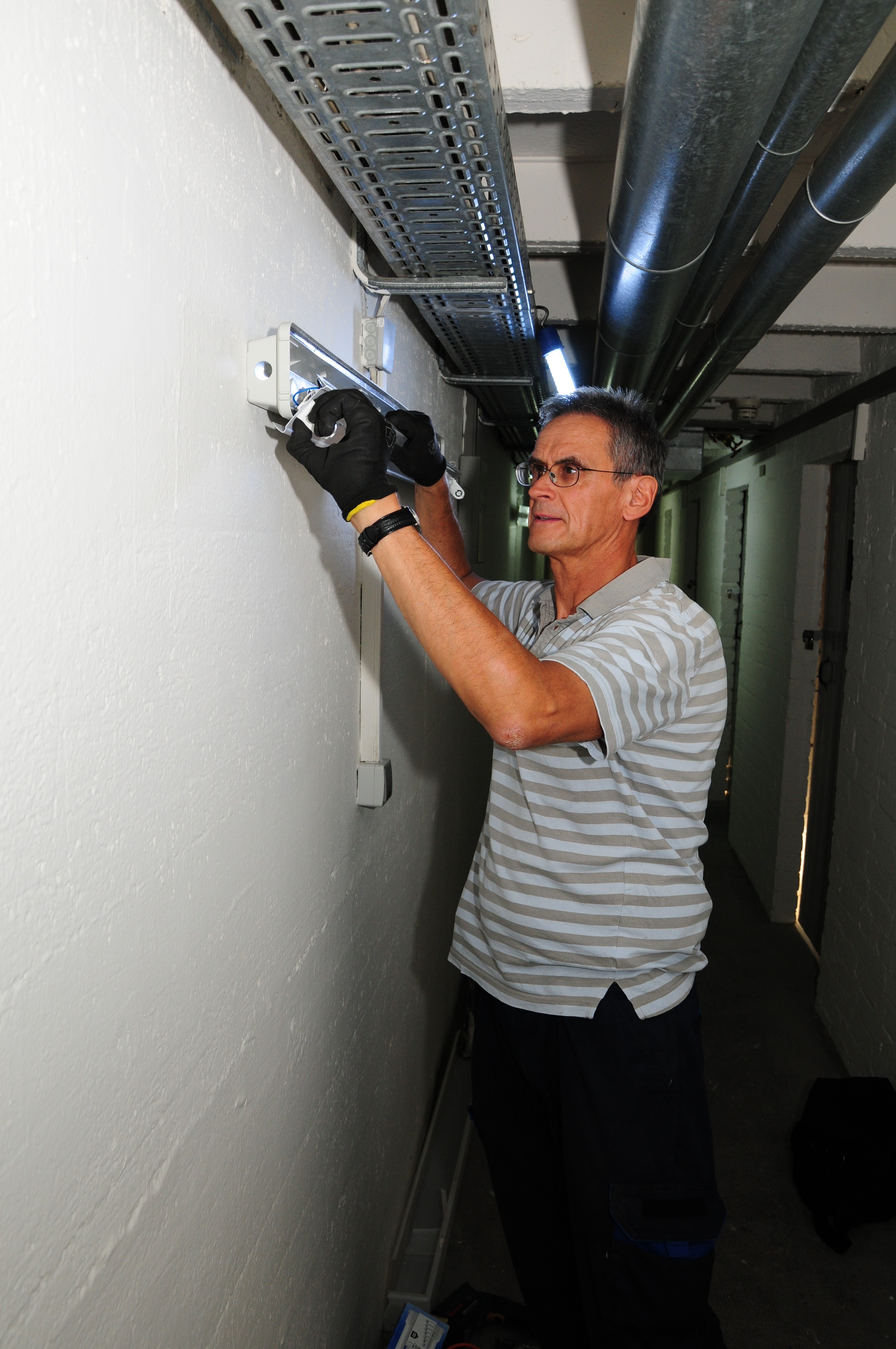
HEIDELBERG, Germany -- Heidelberg's Army Family Housing has in its common areas 50 hazardous waste items that each have a life expectancy of 2.4 years and consumes between 50 and 80 watts of electricity per second. They are slow to start, fragile and composed of multiple components.
These fluorescent light fixtures are being replaced with light-emitting diode fixtures.
LED lights are recyclable, have a life expectancy of 7.14 years, and consume only 18 watts of electricity per second.
The lights come on instantly, are durable plastic, and there are no additional components to fail.
So far, only nine buildings on Patrick Henry Village have received the new lighting, and progress is slow - about two and a half days per building to re-lamp the common areas of the stairwells and basements.
U.S. Army Garrison Heidelberg is the first U.S. military entity to begin installing the lighting, and several other organizations are following the garrison's lead, to include the Air Force, the Defense Commissary Agency and others.
Heidelberg Housing Facility Manager Jay Felvus said the initial cost is significant, but the fixtures pay for themselves through reduced energy costs in 2.7 years, nearly five years before the first bulbs should need replacing.
The life expectancy figures assume eight hours of usage per day, but because the common area lights are on timers, the actual life expectancy is even longer, Felvus said.
And even when a LED tube, which houses 360 individual LED bulbs, needs replacing, it'll be considered a self-help fix because there are no additional components which could be faulty, like starters or ballasts.
With an average service order price of $99 for an electrician to repair a light fixture, Felvus said the cost savings go beyond just energy consumption.
"This is a revolutionary way of lighting," said Marty Hanson, Heidelberg Pollution Prevention Program manager, who added that it also is a step ahead of host nation laws.
Felvus said all the Army Family Housing on PHV will be complete by Christmas, and the remaining family housing on Mark Twain Village will be complete by June.
In the meantime, Hanson said, the Heidelberg Directorate of Public Works has plans to re-lamp the fitness center on Patton Barracks as a pilot project.
Additionally, once all the housing on PHV has been re-lamped, Felvus estimates an annual reduction in carbon dioxide emissions of 117,000 kilograms.
The project is saving money, reducing the garrison's impact on the earth, and creating a safer living environment for Army families.

Social Sharing